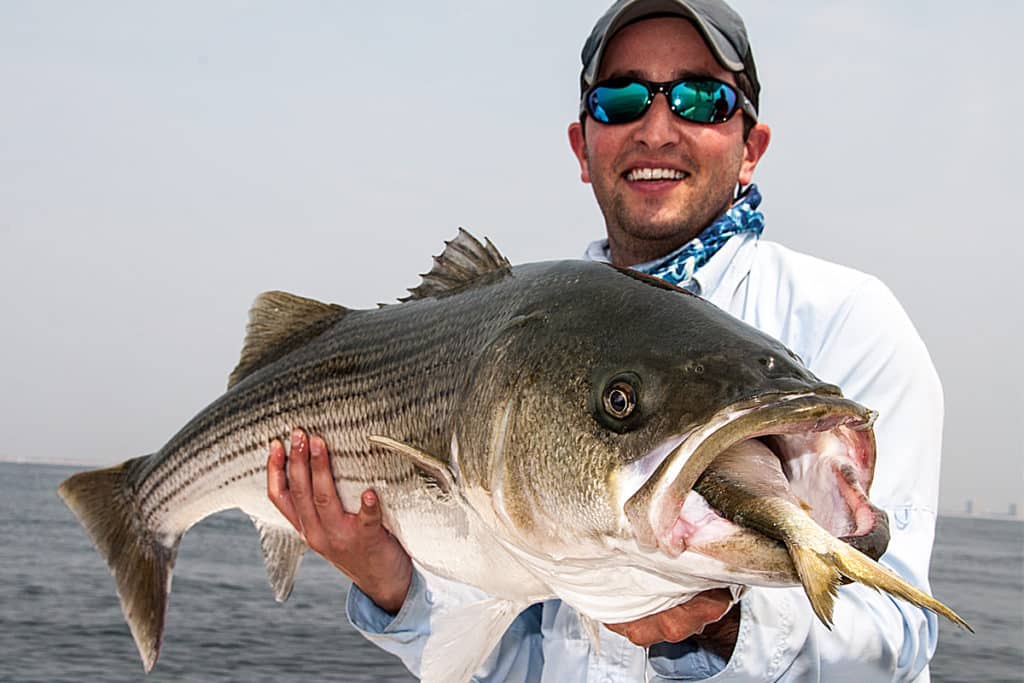
Boats crowded around dense pods of big bunkers as far as the eye could see. It was late June, and masses of adult menhaden, 8 to 9 inches long, had been congregating along the south shore of Long Island in New York for weeks now. Huge stripers, many over 60 pounds, were there to greet them.
It would have been easy to squeeze between a couple of boats, snag a few baits and wait for big bass to find them. But intent on tackling the fish with artificials, I pinned the throttles and headed east until the crowd subsided. As we approached a small bait pod, a dozen bunkers sprayed out of the water, and the silver-and-lavender back of a striper broke the surface just below them.
Before I could say a word, my charter clients sailed a couple of large pencil poppers past the school. Immediately, a boil formed behind the first, followed by a big splash, then a loud “Whoa!” and the high-pitched whine of line peeling off a reel. Several minutes later, we were snapping photos of a healthy striper in the 50-pound range, followed by high-fives all around after we released her.
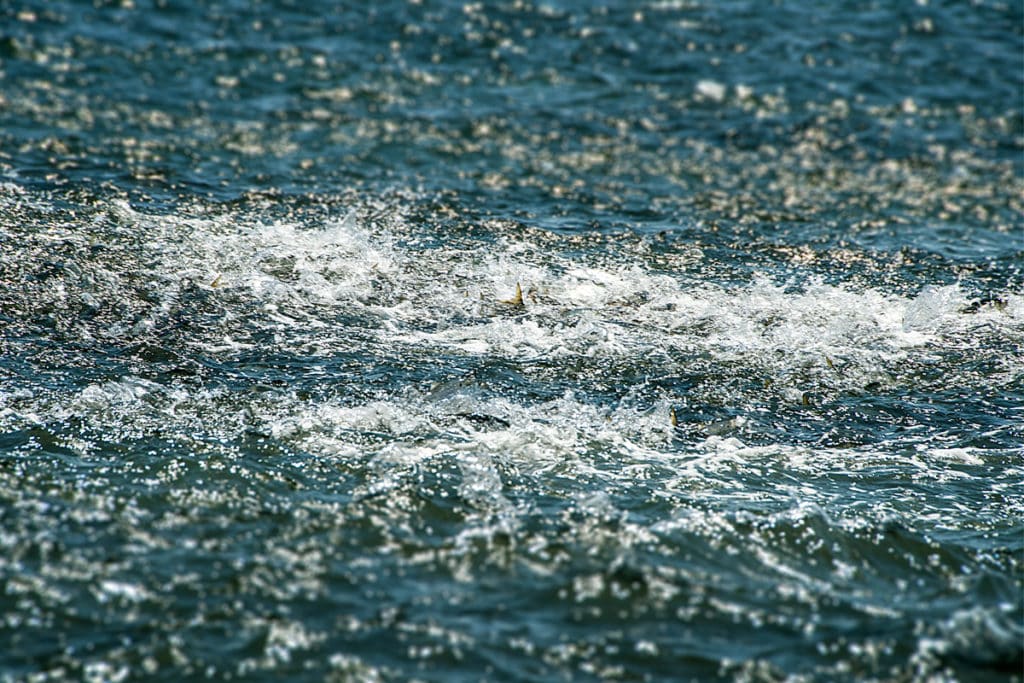
Few would argue that the dynamics of the striped bass fishery in the Northeast have changed. Gone are the days of consistent schoolie action, with the occasional large fish in the bays or under the birds along the coast. What’s the reason? Fewer small fish, for one. Since 2004, the Chesapeake, where most of the coastal stock comes from, hasn’t been producing good young-of-the-year bass (with the exception of 2011, which has yet to recruit). So, what we have now are mostly condensed bodies of large fish spawned before 2004.
Another factor is the bait situation. The small baitfish — silversides, sand eels, bay anchovies — are still around, but we now have incredible concentrations of menhaden. The reasons are debatable. Some argue it’s the reduction in commercial quota. Others claim environmental conditions.
Whatever the cause, those big baits became the main attraction for large stripers, which seem to outnumber small schoolies these days. Such a trend has made things more challenging for light-tackle anglers, or at least those using artificials. Not only is it difficult to imitate the profile of a 9-inch bunker with a lure, it’s also tough to compete with the real deal where the baitfish are so plentiful.
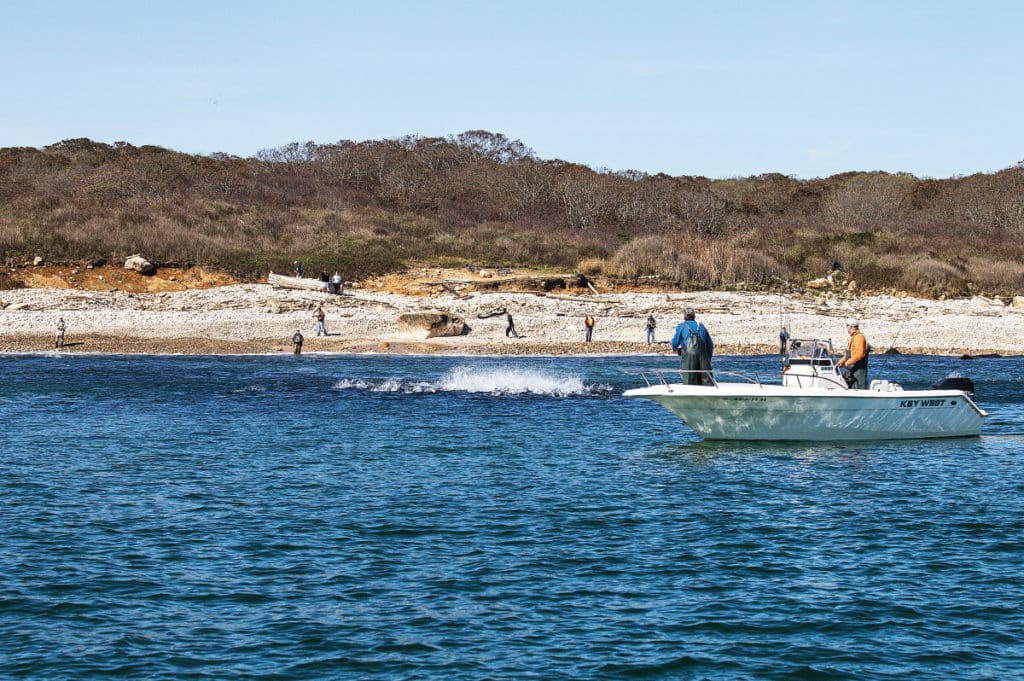
The odds of successfully targeting stripers around bunker schools with artificials when several boats are already on them are pretty slim. With boats motoring around, cast nets parachuting down over the bait pods and weighted treble hooks constantly ripping through them, those fish are bound to be extremely wary. And the hungrier or dumber fish, those likely to fall for a plug, are also the most likely to be caught by the guys fishing liveys.
So the first rule is to get away from the fleet, which is not as hard a task as you might think. In fact, I have found that the farther I run from the inlets, the more the number of boats dwindles and the chances of encountering undisturbed bass around bunker schools increases exponentially.
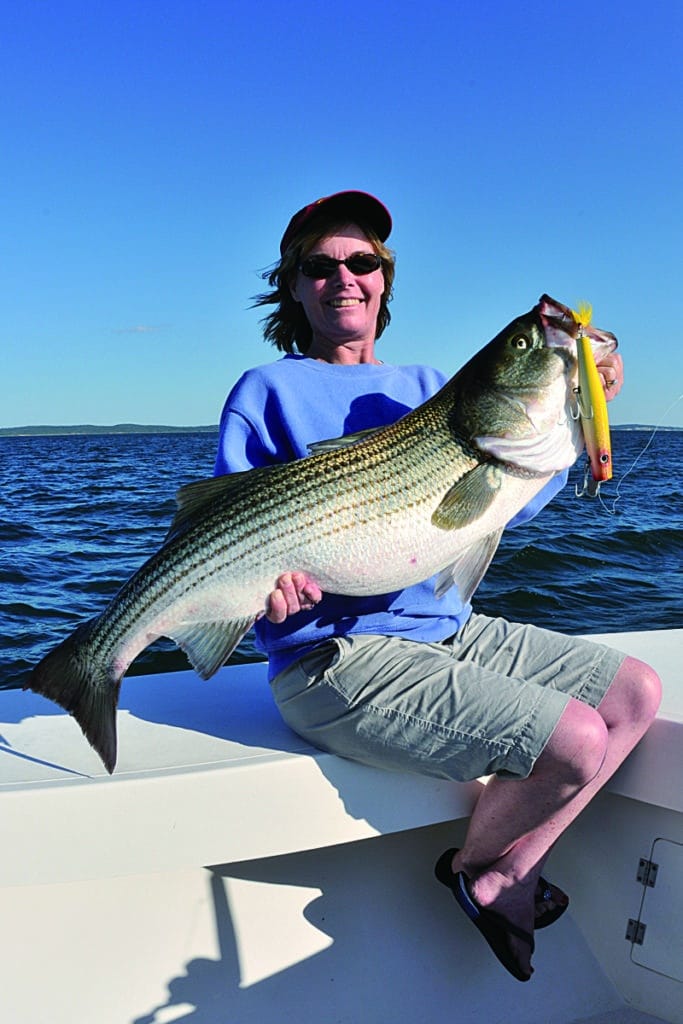
Find one of those pods with a few of its members skittering around the edges, clearly in imminent danger or under attack, and it’s a no-brainer. And the closer to the beach, the better. I have definitely caught more big fish on artificials within close proximity of the surf, which is probably why quite a few trophy striped bass are consistently taken by surf-casters’ throwing plugs.
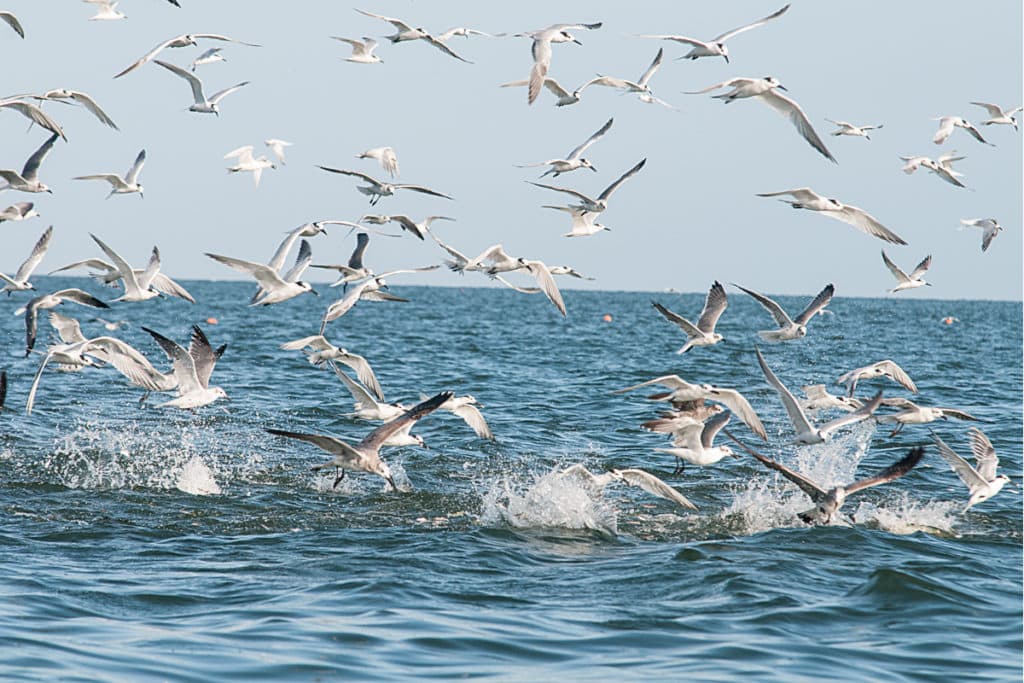
Birds tip off the presence of bait, but they seldom gather over schools of large menhaden because adult menhaden are too large for them to eat. So don’t expect birds to be much help. Instead, you must pay close attention as you cruise along the coast in order to identify the right situation.
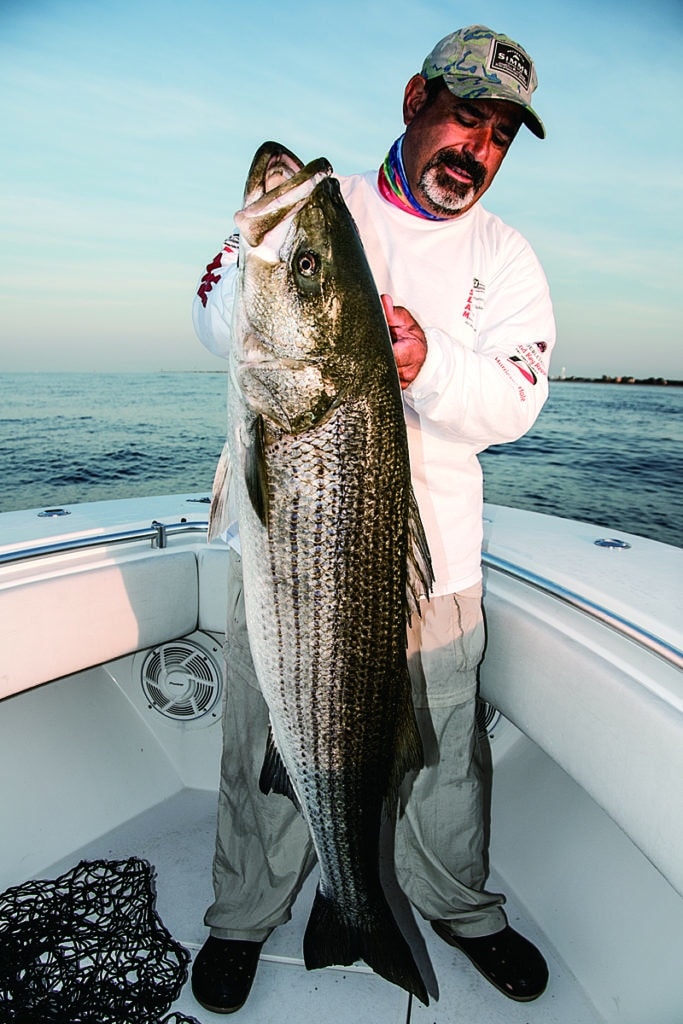
In this fishery, you usually catch trophies or nothing at all. When a gang of hungry stripers attacks a baitfish school, anglers cash in by working surface lures on the outskirts of the melee.
While the action sometimes slows down at slack tide, the water clarity and weather conditions — other than extreme — don’t really matter for this type of fishing. So once you get away from other boats, just concentrate on locating bait. Be sure to avoid “happy bunker,” those vast schools swimming lazily and flipping around unmolested. Instead, focus on bait schools that appear nervous. The ideal ones are condensed as a result of predators lurking nearby. They are usually tightly packed pods moving frantically en masse, often in a circular motion, which is a defense mechanism.
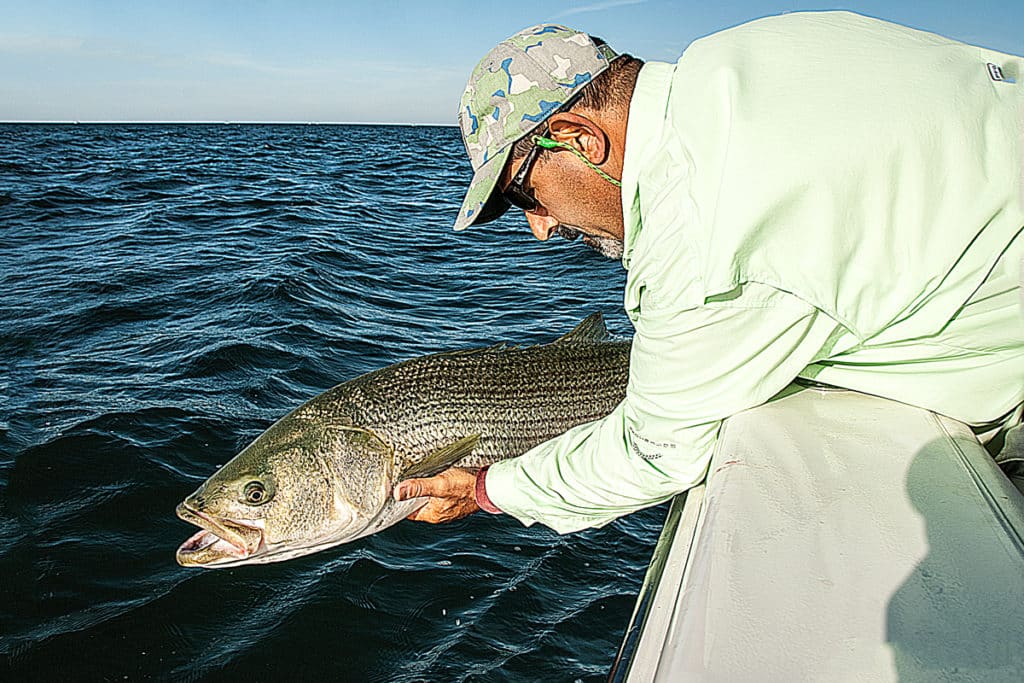
In recent years, I’ve seen more striped bass of 40-, 50- and 60-plus pounds caught in the span of a few days than ever before. Yet, there are clearly fewer striped bass in our waters these days. There isn’t much stratification in size, either. Generally, you either score big, or you don’t score at all.
Menhaden have been so abundant that, if conditions remain the same, it’s common to find bait schools in the same place, during the same tide as the day before. But the stripers that previously preyed on a particular bait school could be conspicuously absent because our current striped bass population consists mainly of relatively small bodies of large fishing moving up and down the coast.
Until the 2011 year class recruits, these fish are pretty much all we have. With that in mind, enjoy the opportunities to catch exceptionally large fish, but please consider taking a quick photo and releasing those trophies. The future of our striper fishery depends on the survival of the big spawners.









